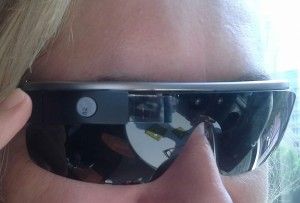Like most of my posts, it all began with a conversation and remembering a story. You find a cherry, pull on it, find another, and end up seeing the whole tree. In September, the Ron Lalá theater company was at the Poliorama theater and, in addition to enjoying their play “Siglo de Oro, siglo de ahora (folía)”, I had the chance to speak with some of the actors and crew outside the theater. During one of these conversations I, once again, witnessed the importance of user behavior towards something that is invading our daily lives: technology and specifically the next big thing, wearables.
Diego Domínguez (lighting technician), while speaking about the arrival of wearables (smart watches, Google glass, etc.), said something that, in my mind, is a total gem: “we’re evolving from homo sapiens into homo ludens”. Meaning that the way we relate to our physical and social surroundings is changing, and doing so through new technology.
Long past are the days (and here is the story) when I would be out on a Friday night in Barcelona with my classmates from the university, with my cell phone –one of the first to hit the market- and to call home to tell my parents not to wait up, I’d hide in a phone booth and take out that device to make my call. At that time my father was Directory of Cellular Communications at a well-known software and hardware company and was one of the first to have a cell phone. This is why I had access to the device, as well as the reason for the shame I felt every time I had to use it.
Nowadays using technology at any point during our day is a well-accepted fact, completely taken for granted (especially among young people who now carry this technology in their DNA).
This led me to think about how mobile devices, and wearables in particular, will evolve because it is through this technology, and how users adopt it, that we will move towards the homo ludens Diego mentioned.
On this topic I recommend two articles that (blessed serendipity) I ran across and that explain this trend very well (with a holistic approach to the phenomenon):
- “The Invisible Future Of Wearables, According To Jawbone” by John Brownlee in CoDesign (Fast Company)
- «Analog Assets: Digital Age» by Mark Miller in Metropolis Mag
Wearables are the next step towards this social change and the way we interact with them and how we use them to interact with others around us is key. We must keep in mind that:
- When you design and develop technology, different groups of people will use it in different ways;
- Groups of people with similar traits will use the same technology in different ways depending on their context (environment);
- Groups of people with similar traits will use technology, or not, in different ways depending on the context: their needs may be different and that has to be researched.
- Every industrial and service sector will be affected by the integration of technology.
These facts are not an obstacle, but an opportunity for all types of industry and services to find market niches and uses, if we are speaking about the tertiary sector and the public sector.
In the end, at the heart of the matter there are always user behaviors that generate needs and, if we have the right technology, how do we make it fit with these needs? For anyone who wants to see it, the answer is simple. And, yes, it is an issue of technology transfer (and marketing, depending on how you look at it).
